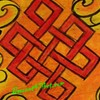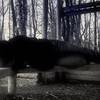GORKHA, Nepal — This is the cradle of the kingdom, from where, more than 250 years ago, a shrewd and ambitious king named Prithvi Narayan Shah set off to conquer faraway lands and create the nation now known as Nepal. Here today stands a gleaming white marble memorial in his honor, except that on the pedestal where his likeness once stood, His Majesty’s name inscribed below, there is now something decidedly less majestic: a pot of pink geraniums.
The king’s statue was toppled by Maoist insurgents last year. They dragged the head through the narrow cobblestone lanes of Gorkha, smashing it until it broke into pieces and singing, “Long Live the Maoists.â€
As it happens, the royal past is being dismembered day by day across this onetime Hindu kingdom. Partly it is the handiwork of the decade-long leftist insurgency to overthrow the monarchy. Partly it is the result of public disaffection stemming from the intervention of the current king, Gyanendra, into government.
Whether Nepal will keep some sort of monarchy or scrap it altogether will be formally decided when the country votes next Thursday for a special assembly to rewrite the Constitution. But as far as the monarchy is concerned, the vote seems largely a formality. It is already being rubbed out of daily life.
A new national anthem makes no reference of allegiance to the king. He no longer heads the army. Pictures of Gyanendra, which once hung in every government office, now gather cobwebs in dank warehouses. The word “Royal†has been dropped from the name of the national airline. Several palaces have been taken over by the government.
Last December, Parliament voted to declare the country a federal democratic republic. The king must now pay taxes, though at Hindu funerals mourners must still offer prayers to his ancestors.
Indeed, in a society where the king was once regarded as an avatar of a Hindu god, erasing the royal past is not always easy.
Consider Nepal’s new currency. Shortly after the king gave up power in 2006, the government ordered the printing of money, starting with the 500-rupee note, free of the king’s portrait. In the new design, developed by the central bank, King Gyanendra’s image was replaced by that of the noncontroversial Mount Everest. But the paper on which the new bills are printed, having been ordered long ago, still bears a watermark of the king’s face.
Unable to afford new currency paper, bank officials took creative license. They slapped a dark-pink rhododendron on top of the watermark. The king and his bird-of-paradise plumed crown can be seen only if the bill is held up to the light.
The ambivalence toward the king is fed by the circumstances under which he inherited the throne. In 2001, his brother, King Birendra, and most of the royal family, were slain in a gruesome palace massacre. In what many here and abroad considered a suspicious turn of fate, only Gyanendra and his family survived.
In 2005, declaring emergency rule, Gyanendra fired the elected government, suspended basic freedoms and vowed to crush the Maoist insurgents. He did not succeed.
Growing frustration with his rule led to street protests in April 2006, prompting the palace to cede power to the last elected government. Eventually, the Maoists locked up their guns and entered politics. The abolition of the monarchy has been the Maoists’ chief demand ever since.
A public opinion poll conducted three months ago by a private firm called Interdisciplinary Analysts found Gyanendra’s personal ratings to be lower than those of the country’s main political leaders: 2, on a 1-to-10 scale.
Even so, 49 percent of Nepalese said they favored retaining the institution of the monarchy, according to the same poll, which surveyed some 3,000 Nepalese and had a margin of sampling error of plus or minus two percentage points. Critics questioned the poll results, describing the polling firm as pro-palace.
Exactly how Nepalese regard the monarchy is hard to divine. In a spirited defense of the monarchy, a priest at a hilltop temple here said he prayed for the survival of a Hindu kingdom and urged Gyanendra to come and seek the blessings of the sage, Baba Goraknath, after whom this temple is named, to save his throne. “I don’t know if Baba likes Gyanendra or not,†said the priest, Ishwar Nath Yogi.
Earlier this year, Baburam Bhattarai, the Maoists’ second in command, climbed the steep stone steps to this temple and, bizarrely, offered prayers with his parents. The brothers Yogi gave their blessings, albeit reluctantly.
In the shadow of the temple, a porter named Krishna Prasad Neupane, 48, carried backpacks for foreign tourists. “The king is very rich, and the poor are the ones who carry these loads,†he said. “We don’t need monarchy any more.â€
Dhanamaya Shrestha, 53, walking home uphill with a sack of vegetables, said she revered the slain king, Birendra, but not his brother. Even her 4-year-old grandson, she recounted, climbed a stool and tore down a picture of Gyanendra that had once hung at home.
A glimpse into the king’s own wishes came from Tika Dhamala, a retired army general and the king’s former aide-de-camp. Politicians had misunderstood and maligned the king, he said.
Nepalese, whom he called “innocent†and wedded to tradition, were not prepared for the instability of a Nepal without a king. “I’m feeling very uneasy,†he said. “Our society is not in a position to accept a complete type of republic.â€
The wild card is the extent to which the king has loyalists in the Nepalese Army, and if they will act to save the monarchy.
Madhav Bhattarai, the chief priest at Narayanhiti Palace, the king’s headquarters in Katmandu, the capital, was not ready to write off the monarchy either. After all, he said, the election date was auspicious according to the Hindu calendar, and the king of Nepal was endowed with divine powers.
“I don’t know what he will do to save his throne,†said Mr. Bhattarai, 56. “I know Nepal needs the king’s role in some form, ceremonial, symbolic; we need the king one way or the other.â€
Special powers could not save a statue of Gyanendra’s father, Mahendra, whose decapitated likeness, eerily draped with a gray cloth, stands in the lobby of the Nepal Academy, where Mr. Bhattarai has his office.
The statue’s head was lopped off during anti-palace protests two years ago. It was later found in a dirty river.
http://www.nytimes.com/2008/04/03/world/asia/03nepal.html?pagewanted=1&_r=1&ref=world#

















